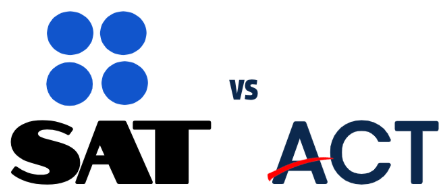A Digital Exam: The Evolution and Future of the SAT

Photo by Francis Miller/ High school students taking first-ever National Merit Scholarship Program exams in 1955.
February 6, 2022
The SAT is one of the hallmark experiences of most American high school students preparing to apply to college. It is meant to determine “college readiness”. Currently a three hour exam split into four sections (Reading, Writing and Language, No Calculator Math, and Calculator Math), it has historically played a significant role in admission decisions by colleges and universities. The SAT, like any business product wishing to extend its life expectancy, has adapted to the times and changed over the years, and notably, announced another major change this year.
History of the SAT
The first iteration of the SAT was the Scholastic Aptitude Test (currently, SAT doesn’t stand for anything), administered experimentally to around 8,000 students in 1926. It was adapted from the first mass administered IQ test, the Army Alpha, given to recruits of the U.S. Army to test their intelligence. The first SAT featured subjects such as classification, arithmetic, antonyms, analogies, and logical inference. By 1938, all member schools of the College Board had accepted the SAT as their admittance exam.
In the 1950s and 60s, College Board and the SAT experienced rapid growth in the number of test takers, and had established the structure of the SAT seen today. Although the College Board previously regarded the test as “uncoachable”, it started releasing sample questions in 1978 (this can be linked to the popularity of SAT prep companies).
In 1994, College Board put more emphasis on analytical reading and allowed calculators. In 2005, the essay portion was added, analogy questions were removed, and the maximum score was raised from 1600 to 2400. The total time of the 2005 SAT was 3 hours and 45 minutes.
2016 saw the return of the 1600 score and removed penalties for wrong answers. Around the same time, College Board teamed up with Khan Academy to offer SAT prep. In 2021, the essay portion was removed.
2023 and Beyond
On January 25th, 2022, the College Board announced the SAT’s newest changes. Starting in 2023 for international students and 2024 for the U.S., the SAT will be administered digitally.
The test will still be taken under supervision in testing centers, but students will have a choice between a school-issued, personal, or College Board provided electronic device. The test is designed to automatically save in case of electricity loss.
The reading passages will be shorter and reflect a wider range of topics, calculators will be allowed for the entire Math section, and the test will be unique for each student. The test length will shorten, from the original three hours to two.
The digital system also means that the test scores will be made public within days (instead of weeks).
What’s the real reason behind the changes?
“The digital SAT will be easier to take, easier to give, and more relevant… With input from educators and students, we are adapting to ensure we continue to meet their evolving needs.” says Priscilla Rodriguez, the vice president of College Readiness Assessments at College Board.
The SAT has been steadily losing test takers over the past several years, with the pandemic affecting test dates and hundreds of schools becoming test-optional. By making the test easier to take, there is more incentive for students to take it.
Witnesses at Weddington
In a survey conducted out of seventeen Weddington students, 88% had taken/are preparing to take the SAT. The vast majority of students surveyed reported studying for the SAT, most citing spending “hours upon hours”.
Toward the new SAT changes, Weddington students said:
Senior Wren Spencer: “that is a little unfair but I understand that things change as our society does, but I don’t really feel like they should make it easier, maybe modify it to fit into today’s society instead”.
Senior Natalie Reid: “I’m jealous that they get to take an easier test than the one my class and classes before us have had to take.”
Junior Jeevan Nair: “I am very mad, because I am in the class of 2023, so I might get a lower score than the sophomores and freshmen who wouldn’t have prepared as much as me”.
Sophomore Brooklyn Warner: “I am fine with the time we have now because I still feel rushed at parts, but I would enjoy being able to use my calculator the whole time”.








